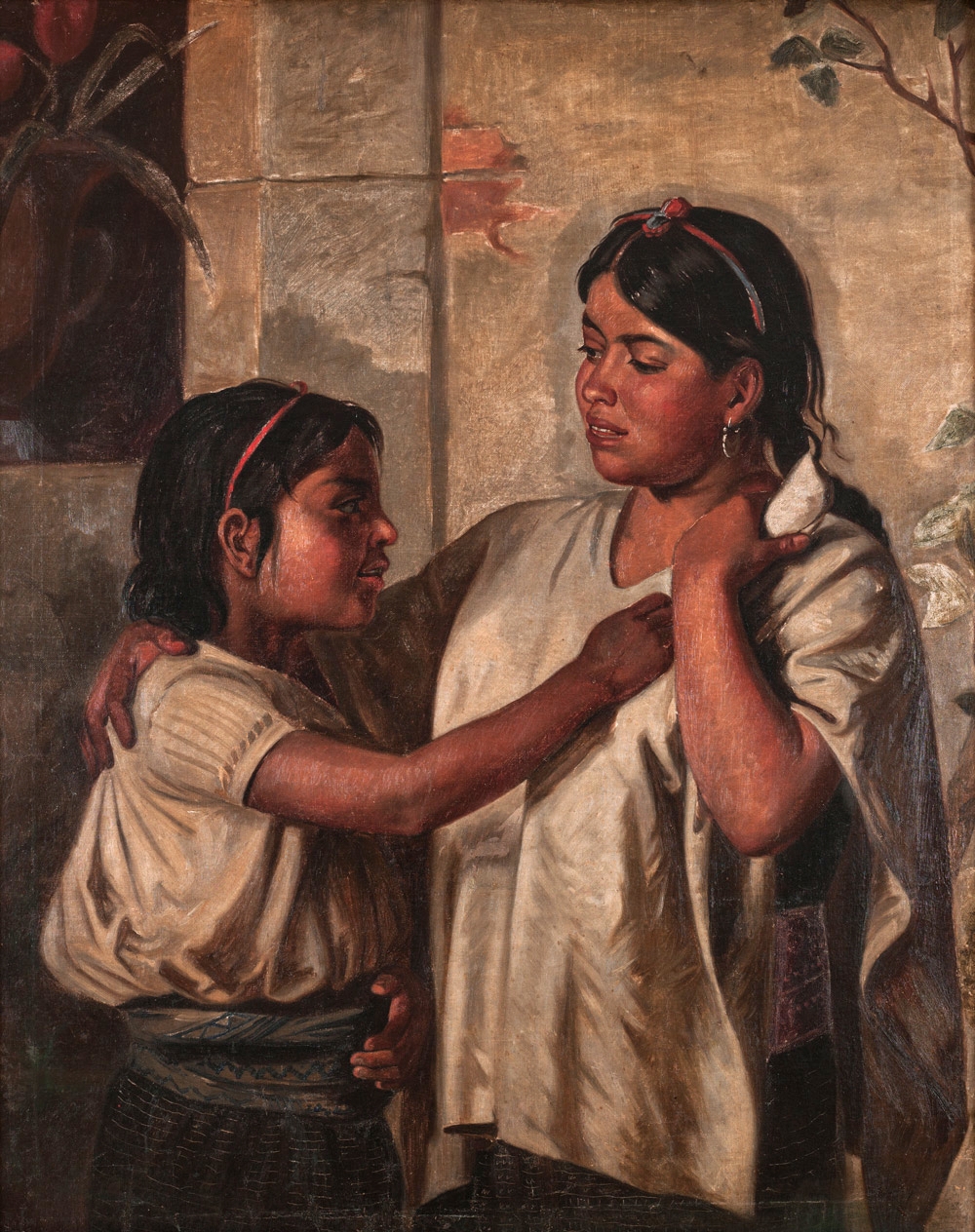|
Huichol People
The Huichol or Wixárika are an indigenous people of Mexico and the United States living in the Sierra Madre Occidental range in the states of Nayarit, Jalisco, Zacatecas, and Durango, as well as in the United States in the states of California, Arizona, New Mexico, and Texas. They are best known to the larger world as the ''Huichol'', although they refer to themselves as ''Wixáritari'' ("the people") in their native Huichol language. The adjectival form of ''Wixáritari'' and name for their own language is ''Wixárika''. The ethnonym huichol comes from the adaptation to the language Nahuatl from the ethnonym wixarika, due to that in the language wixarika the a can be spoken like o; r y l are allophones, and the pronunciation of x, that was a sibilant, was read as an affricate, tz, between the 17th and 18th centuries (time period in which the word could have been borrowed), but the loss of the syllable -ka resulted in huitzol en náhuatl, and its hispanicization, wirraricas. ... [...More Info...] [...Related Items...] OR: [Wikipedia] [Google] [Baidu] |
Shamanism
Shamanism is a religious practice that involves a practitioner (shaman) interacting with what they believe to be a Spirit world (Spiritualism), spirit world through Altered state of consciousness, altered states of consciousness, such as trance. The goal of this is usually to direct Non-physical entity, spirits or Energy (esotericism), spiritual energies into the physical world for the purpose of healing, divination, or to aid human beings in some other way. Beliefs and practices categorized as "shamanic" have attracted the interest of scholars from a variety of disciplines, including anthropologists, archeologists, historians, religious studies scholars, philosophers and psychologists. Hundreds of books and Academic publishing#Scholarly paper, academic papers on the subject have been produced, with a peer-reviewed academic journal being devoted to the study of shamanism. In the 20th century, non-Indigenous Peoples, Indigenous Westerners involved in countercultural movements, ... [...More Info...] [...Related Items...] OR: [Wikipedia] [Google] [Baidu] |
Spanish Language
Spanish ( or , Castilian) is a Romance languages, Romance language of the Indo-European language family that evolved from colloquial Latin spoken on the Iberian peninsula. Today, it is a world language, global language with more than 500 million native speakers, mainly in the Americas and Spain. Spanish is the official language of List of countries where Spanish is an official language, 20 countries. It is the world's list of languages by number of native speakers, second-most spoken native language after Mandarin Chinese; the world's list of languages by total number of speakers, fourth-most spoken language overall after English language, English, Mandarin Chinese, and Hindustani language, Hindustani (Hindi-Urdu); and the world's most widely spoken Romance languages, Romance language. The largest population of native speakers is in Mexico. Spanish is part of the Iberian Romance languages, Ibero-Romance group of languages, which evolved from several dialects of Vulgar Latin in I ... [...More Info...] [...Related Items...] OR: [Wikipedia] [Google] [Baidu] |
Affricate
An affricate is a consonant that begins as a stop and releases as a fricative, generally with the same place of articulation (most often coronal). It is often difficult to decide if a stop and fricative form a single phoneme or a consonant pair. English has two affricate phonemes, and , often spelled ''ch'' and ''j'', respectively. Examples The English sounds spelled "ch" and "j" ( broadly transcribed as and in the IPA), German and Italian ''z'' and Italian ''z'' are typical affricates, and sounds like these are fairly common in the world's languages, as are other affricates with similar sounds, such as those in Polish and Chinese. However, voiced affricates other than are relatively uncommon. For several places of articulation they are not attested at all. Much less common are labiodental affricates, such as in German and Izi, or velar affricates, such as in Tswana (written ''kg'') or in High Alemannic Swiss German dialects. Worldwide, relatively few la ... [...More Info...] [...Related Items...] OR: [Wikipedia] [Google] [Baidu] |
Sibilant
Sibilants are fricative consonants of higher amplitude and pitch, made by directing a stream of air with the tongue towards the teeth. Examples of sibilants are the consonants at the beginning of the English words ''sip'', ''zip'', ''ship'', and ''genre''. The symbols in the International Phonetic Alphabet used to denote the sibilant sounds in these words are, respectively, . Sibilants have a characteristically intense sound, which accounts for their paralinguistic use in getting one's attention (e.g. calling someone using "psst!" or quieting someone using "shhhh!"). In the hissing sibilants and , the back of the tongue forms a narrow channel (is '' grooved'') to focus the stream of air more intensely, resulting in a high pitch. With the hushing sibilants (occasionally termed ''shibilants''), such as English , , , and , the tongue is flatter, and the resulting pitch lower. A broader category is stridents, which include more fricatives than sibilants such as uvulars. Becaus ... [...More Info...] [...Related Items...] OR: [Wikipedia] [Google] [Baidu] |
Allophone
In phonology, an allophone (; from the Greek , , 'other' and , , 'voice, sound') is a set of multiple possible spoken soundsor ''phones''or signs used to pronounce a single phoneme in a particular language. For example, in English, (as in ''stop'' ) and the aspirated form (as in ''top'' ) are allophones for the phoneme , while these two are considered to be different phonemes in some languages such as Thai. On the other hand, in Spanish, (as in ''dolor'' ) and (as in ''nada'' ) are allophones for the phoneme , while these two are considered to be different phonemes in English. The specific allophone selected in a given situation is often predictable from the phonetic context, with such allophones being called positional variants, but some allophones occur in free variation. Replacing a sound by another allophone of the same phoneme usually does not change the meaning of a word, but the result may sound non-native or even unintelligible. Native speakers of a given lang ... [...More Info...] [...Related Items...] OR: [Wikipedia] [Google] [Baidu] |
Nahuatl
Nahuatl (; ), Aztec, or Mexicano is a language or, by some definitions, a group of languages of the Uto-Aztecan language family. Varieties of Nahuatl are spoken by about Nahua peoples, most of whom live mainly in Central Mexico and have smaller populations in the United States. Nahuatl has been spoken in central Mexico since at least the seventh century CE. It was the language of the Aztec/ Mexica, who dominated what is now central Mexico during the Late Postclassic period of Mesoamerican history. During the centuries preceding the Spanish and Tlaxcalan conquest of the Aztec Empire, the Aztecs had expanded to incorporate a large part of central Mexico. Their influence caused the variety of Nahuatl spoken by the residents of Tenochtitlan to become a prestige language in Mesoamerica. After the conquest, when Spanish colonists and missionaries introduced the Latin alphabet, Nahuatl also became a literary language. Many chronicles, grammars, works of poetry, administrative ... [...More Info...] [...Related Items...] OR: [Wikipedia] [Google] [Baidu] |
Ethnonym
An ethnonym () is a name applied to a given ethnic group. Ethnonyms can be divided into two categories: exonyms (whose name of the ethnic group has been created by another group of people) and autonyms, or endonyms (whose name is created and used by the ethnic group itself). As an example, the largest ethnic group in Germany is Germans. The ethnonym ''Germans'' is a Latin-derived exonym used in the English language. Conversely, the Germans call themselves the , an endonym. The German people are identified by a variety of exonyms across Europe, such as (French), (Italian), (Swedish) and (Polish). As a sub-field of anthroponymy, the study of ethnonyms is called ethnonymy or ethnonymics. Ethnonyms should not be confused with demonyms, distinctive terms that designate all people related to a specific territory, regardless of any ethnic, religious, linguistic or some other distinctions that may exist within the population of that territory. Variations Numerous ethnonyms can ap ... [...More Info...] [...Related Items...] OR: [Wikipedia] [Google] [Baidu] |
Sierra Madre Occidental
The Sierra Madre Occidental is a major mountain range system of the North American Cordillera, that runs northwest–southeast through northwestern and western Mexico, and along the Gulf of California. The Sierra Madre is part of the American Cordillera, a chain of mountain ranges (cordillera) that consists of an almost continuous sequence of mountain ranges that form the western 'sounds' of North America, Central America, South America and West Antarctica. Etymology The Spanish name ''sierra madre'' means "mother mountain range" in English, and ''occidental'' means "western", these thus being the "Western mother mountain range". To the east, from the Spanish ''oriental'' meaning "eastern" in English, the Sierra Madre Oriental range or "Eastern Mother Mountains" runs generally parallel to the Sierra Madre Occidental along eastern Mexico and the Gulf of Mexico. The range extends from northern Sonora, a state near the Mexico–U.S. border at Arizona, southeastwards to the ... [...More Info...] [...Related Items...] OR: [Wikipedia] [Google] [Baidu] |
Indigenous People Of Mexico
Indigenous peoples of Mexico ( es, gente indígena de México, pueblos indígenas de México), Native Mexicans ( es, nativos mexicanos) or Mexican Native Americans ( es, pueblos originarios de México, lit=Original peoples of Mexico), are those who are part of communities that trace their roots back to populations and communities that existed in what is now Mexico before the arrival of the Spanish. The number of indigenous Mexicans is defined through the second article of the Constitution of Mexico, Mexican Constitution. The Censo General de Población y Vivienda, Mexican census does not classify individuals by race, using the Culture, cultural-Ethnic group, ethnicity of indigenous communities that preserve their Indigenous language, indigenous languages, traditions, beliefs, and cultures. According to the National Indigenous Institute (INI) and the National Institute of Indigenous Peoples (CDI), in 2012 the indigenous population was approximately 15 million people, divided into ... [...More Info...] [...Related Items...] OR: [Wikipedia] [Google] [Baidu] |
Uto-Aztecan
Uto-Aztecan, Uto-Aztekan or (rarely in English) Uto-Nahuatl is a family of indigenous languages of the Americas, consisting of over thirty languages. Uto-Aztecan languages are found almost entirely in the Western United States and Mexico. The name of the language family was created to show that it includes both the Ute language of Utah and the Nahuan languages (also known as Aztecan) of Mexico. The Uto-Aztecan language family is one of the largest linguistic families in the Americas in terms of number of speakers, number of languages, and geographic extension. The northernmost Uto-Aztecan language is Shoshoni, which is spoken as far north as Salmon, Idaho, while the southernmost is the Pipil language of El Salvador and Nicaragua. ''Ethnologue'' gives the total number of languages in the family as 61, and the total number of speakers as 1,900,412. Speakers of Nahuatl languages account for over 85% of these. The internal classification of the family often divides it into two branc ... [...More Info...] [...Related Items...] OR: [Wikipedia] [Google] [Baidu] |
Hopi
The Hopi are a Native American ethnic group who primarily live on the Hopi Reservation in northeastern Arizona, United States. As of the 2010 census, there are 19,338 Hopi in the country. The Hopi Tribe is a sovereign nation within the United States and has government-to-government relations with the United States federal government. Particular villages retain autonomy under the Hopi Constitution and Bylaws. The Hopi language is one of 30 in the Uto-Aztecan language family. The majority of Hopi people are enrolled in the Hopi Tribe of Arizona but some are enrolled in the Colorado River Indian Tribes. The Hopi Reservation covers a land area of . The Hopi encountered Spaniards in the 16th century, and are historically referred to as Pueblo people, because they lived in villages (''pueblos'' in the Spanish language). The Hopi are thought to be descended from the Ancestral Puebloans ( Hopi: ''Hisatsinom''), who constructed large apartment-house complexes and had an advanced c ... [...More Info...] [...Related Items...] OR: [Wikipedia] [Google] [Baidu] |




